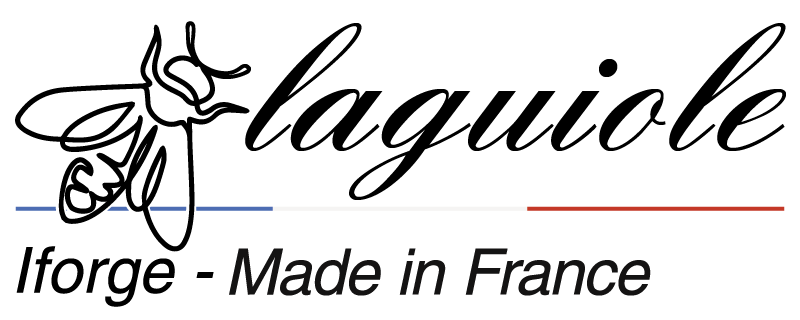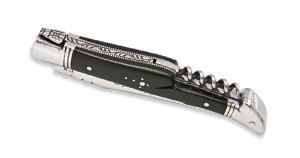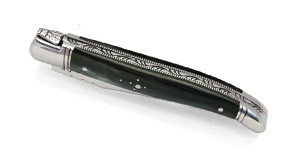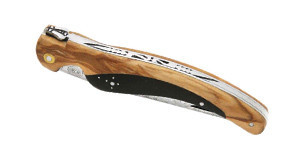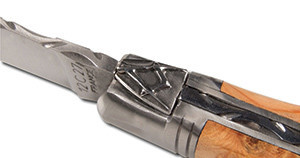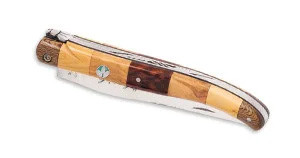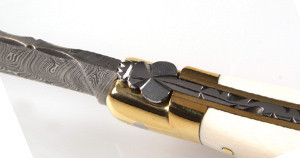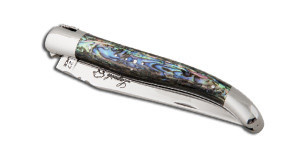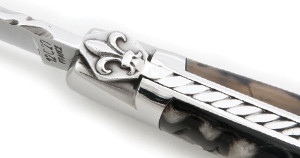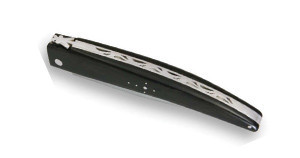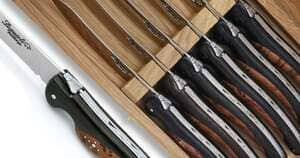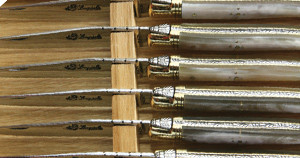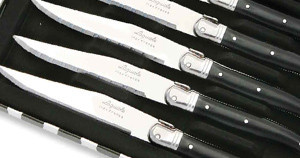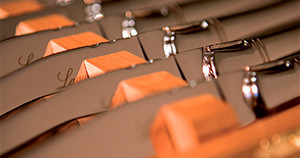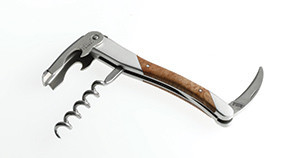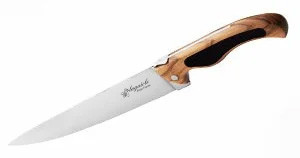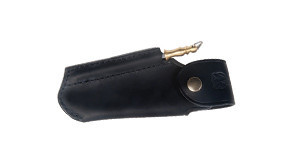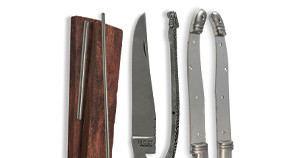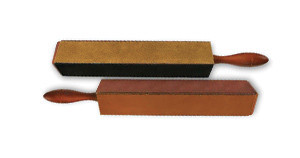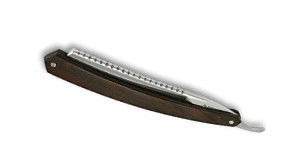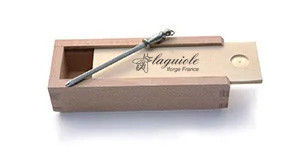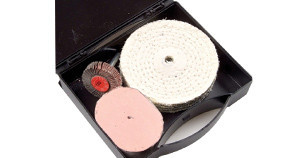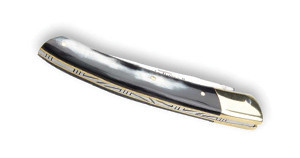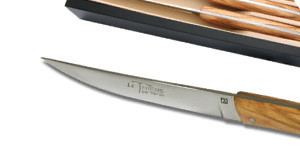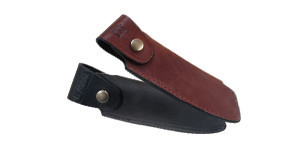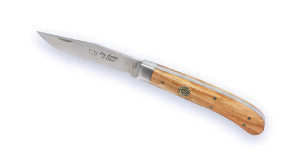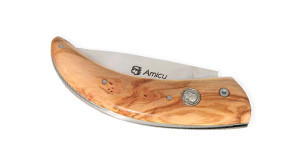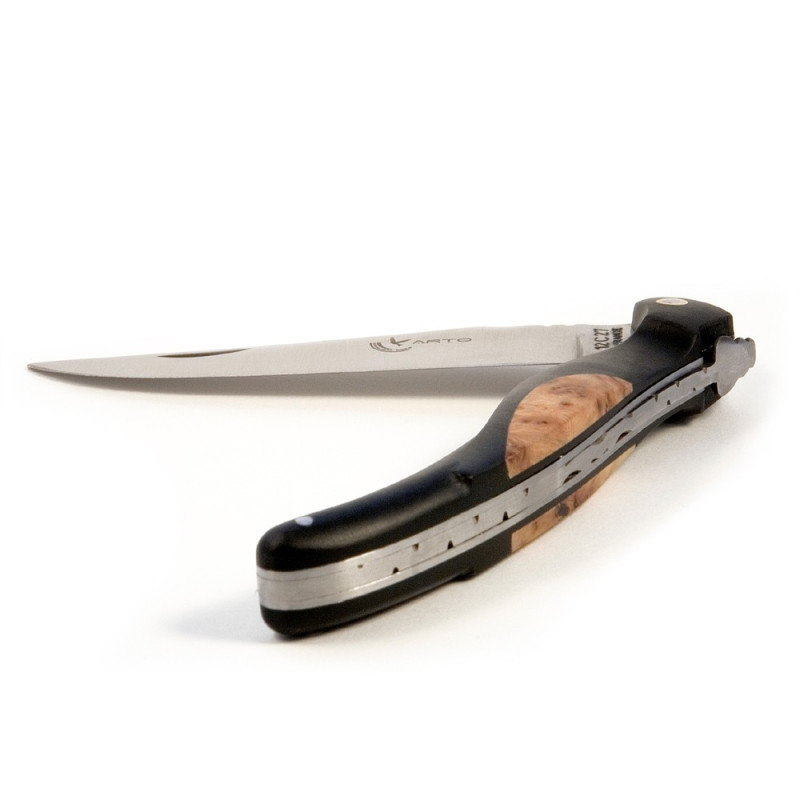History of the laguiole knife
The Club collects information from all amateurs of knife-makingIf you want to speak about something important for you, don't hesitate contact us.
.png)
History of the laguiole knife
There were 5 knife-makers in the village.
The following names Pages, Calmels, Mas and Gleize can be found.
The handmade knives made in laguiole were on the whole very similar to the Yssingeaux . The knife depicted below may be considered the ancestor of the laguiole knives we know today.
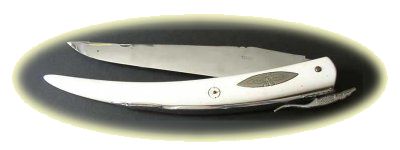
The handle is made of the tip of a very white ivory tusk.
Made circa 1950.
So, they asked The Thiers cutlery-making factories to help and manufacture knives with the laguiole mark.
For nearly 50 years manufacturing stopped entirely in laguiole.
But the Thiers cutlers went on producing them.
In 1987, the people of Aveyron relocated a factory in laguiole.
French designer Philippe Starck redesigned the laguiole knife and gave it a sharp blade in the Yatagan style.
Success was immediate. The laguiole knife even acquiresits own legend.
The cross which adorns the handle is supposed to help isolated shepherds pray in their "burons".
The town of laguiole claimed exclusive rights to on-site manufacturing of these knives.
Thiers refused,of course, arguing that the cutlery capital had contributed to saving and developing the french knife for about two hundred years.
The hatchet has now been buried and cutlery-makers of both towns now make different models of laguiole in good partnership.
laguiole is not a brand. Legally speaking, the name of a town can’t be patented.
Dealers use the name of laguiole to sell copies of laguiole knives.
The imported knives are cheap and of bad quality.
French cutlers do not manufacture derived products. They exclusively craft cutlery. laguiole cutlery is sold with a guarantee.
Since we are on the subject : bee or fly ?
1909 is a landmark year for the history of the laguiole. Indeed, that is when Jules Calmels came up with the idea of adding a bee above the spring.
According to a charming legend, Napoleon himself permitted the Aveyron cutlery makers to use the bee as their emblem as a sign of their bravery in combat. The truth is that it was simply added for aesthetic reasons.
Even if bee are much more attractive insects than flies, in French, la mouche (or fly) is the technical cutlery word referring to the flattened part at the end of the spring. It is the end of the backspring and can depict more than just a bee. As we mentioned before, flowers were frequently used.
But it is certainly Aveyron inhabitant Jules Calmel who was the first to place a bee on la mouche.
However he did not patent the idea. In any case it was too late and there was no point in patenting the design since there were already dozens of cutlery makers in laguiole and Thiers who manufactured laguioles with flowers, animals and other insignia on the spring.
Demand kept growing until after World War 2.
There was an uncertain period between 1950 and 1980. Manufacturers wanted low prices over quality and popular demand for laguiole knives flagged.
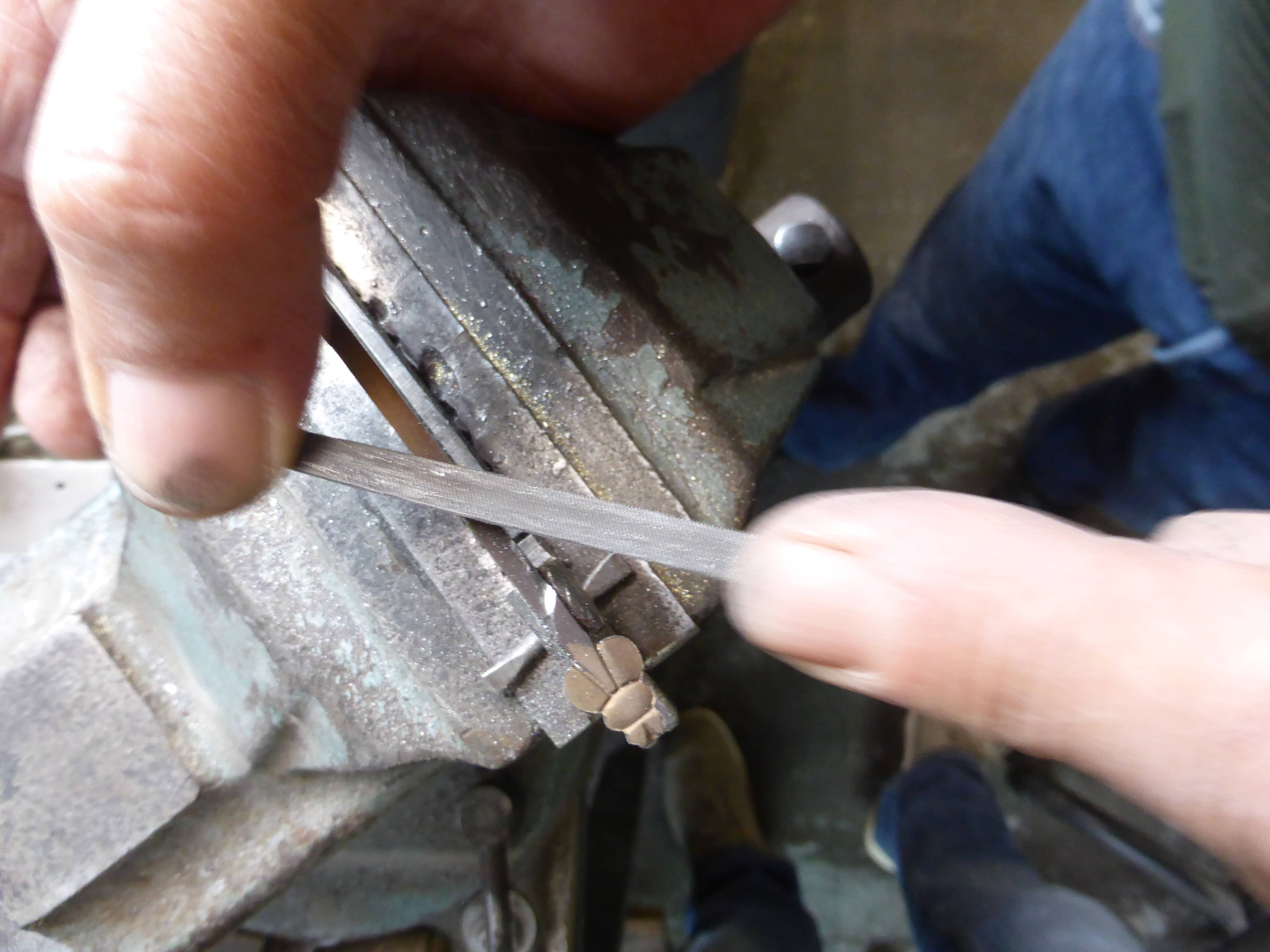
Recent history
In 1987, with the help of people from Thiers, Aveyron inhabitants re opened a cutlery factory in laguiole.
French designer Philippe Starck revisited its design and gave it a Yatagan-style tapered blade.
Once again, great care was given to its manufacturing and laguiole knives became trendy once more.
They even acquired their own legend.
The cross which decorates the handle allegedly helped cowherds pray in the traditional isolated burons farms.
Such a success generated resentment.
The city of laguiole claimed exclusivity over the making of the knife. Of course, Thiers opposed this idea. Thiers and its inhabitants had contributed to the safeguarding and the development of the laguiole model for almost 200 years. It was inconceivable to give in.
A common ennemy would soon unite both cities : Gilbert Szajner
This Val de Marne entrepreneur decided to patent the laguiole brand in 1993 and to import knives made in China.
In fact, there are currently on the French market more knives made in Asia than French knives.
A legal drama began until the law finally came to a decision :
laguiole is not a brand. The name of a city cannot be legally patented.
From then on, laguiole became a common noun. You can now say either ‘give me the knife please’ or ‘give me the laguiole please’.
Sadly, nothing currently prevents knives made in China from being imported into France, but it is possible to check their provenance.
This indication does not yet appear on the blade but you can demand a certificate of origin or a warranty when you buy your knife.
A project for Protected Geographical Indication (PGI) label is in progress, to determine a manufacturing territory, similar to what is in practice for food or drinks. This territory would include the cities of laguiole and Thiers.
Such a PGI would be a means to protect ourselves against massive Asian imports and would additionally provide an opportunity to unite both manufacturing locations.
As you can see, the story of the laguiole knife is far from over !

